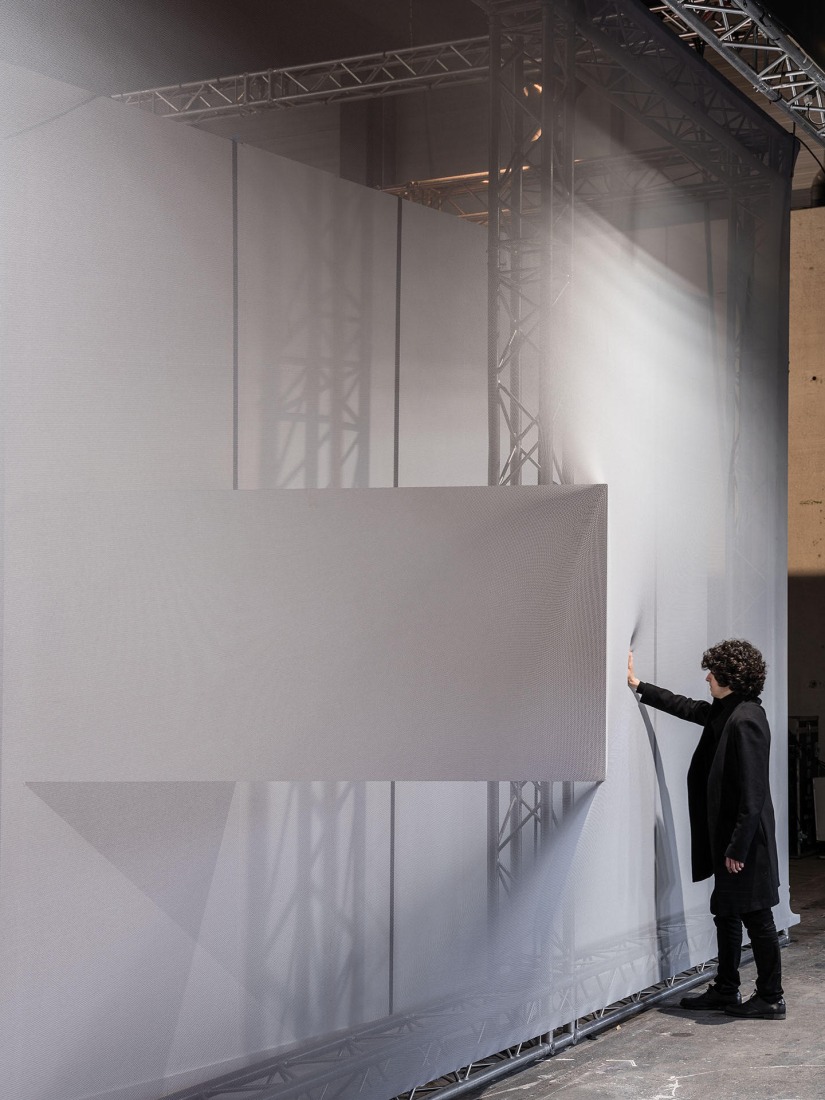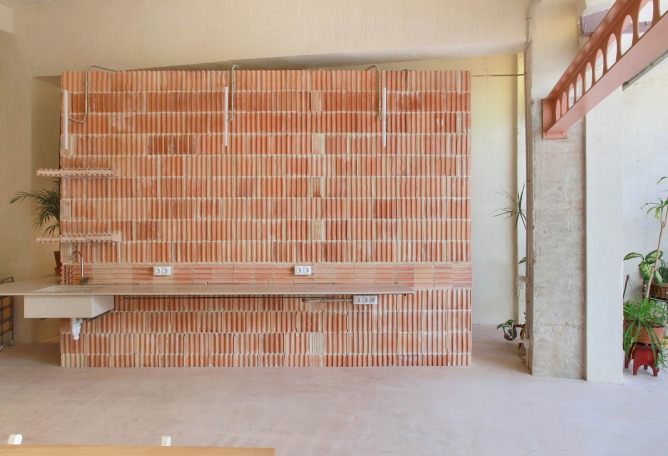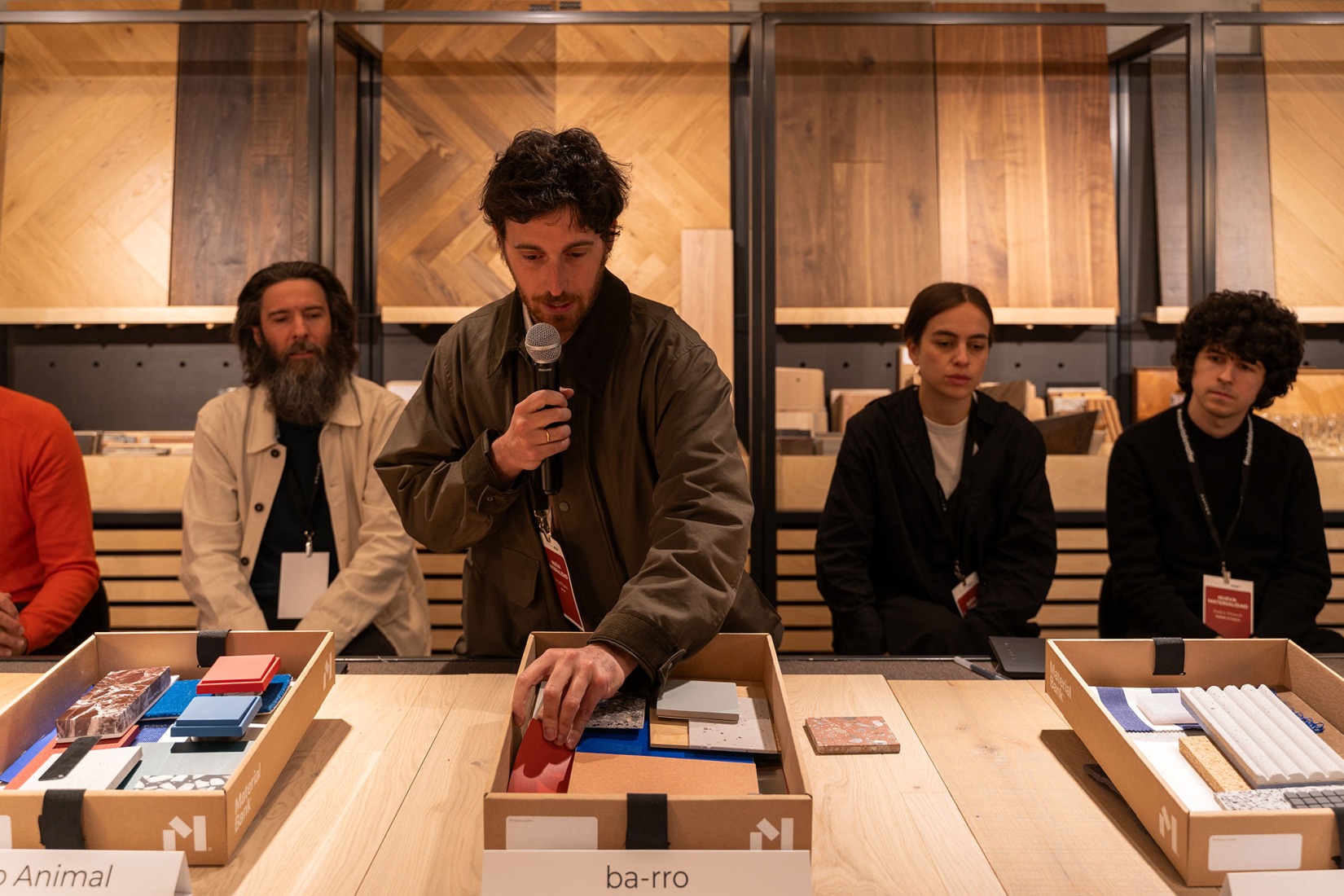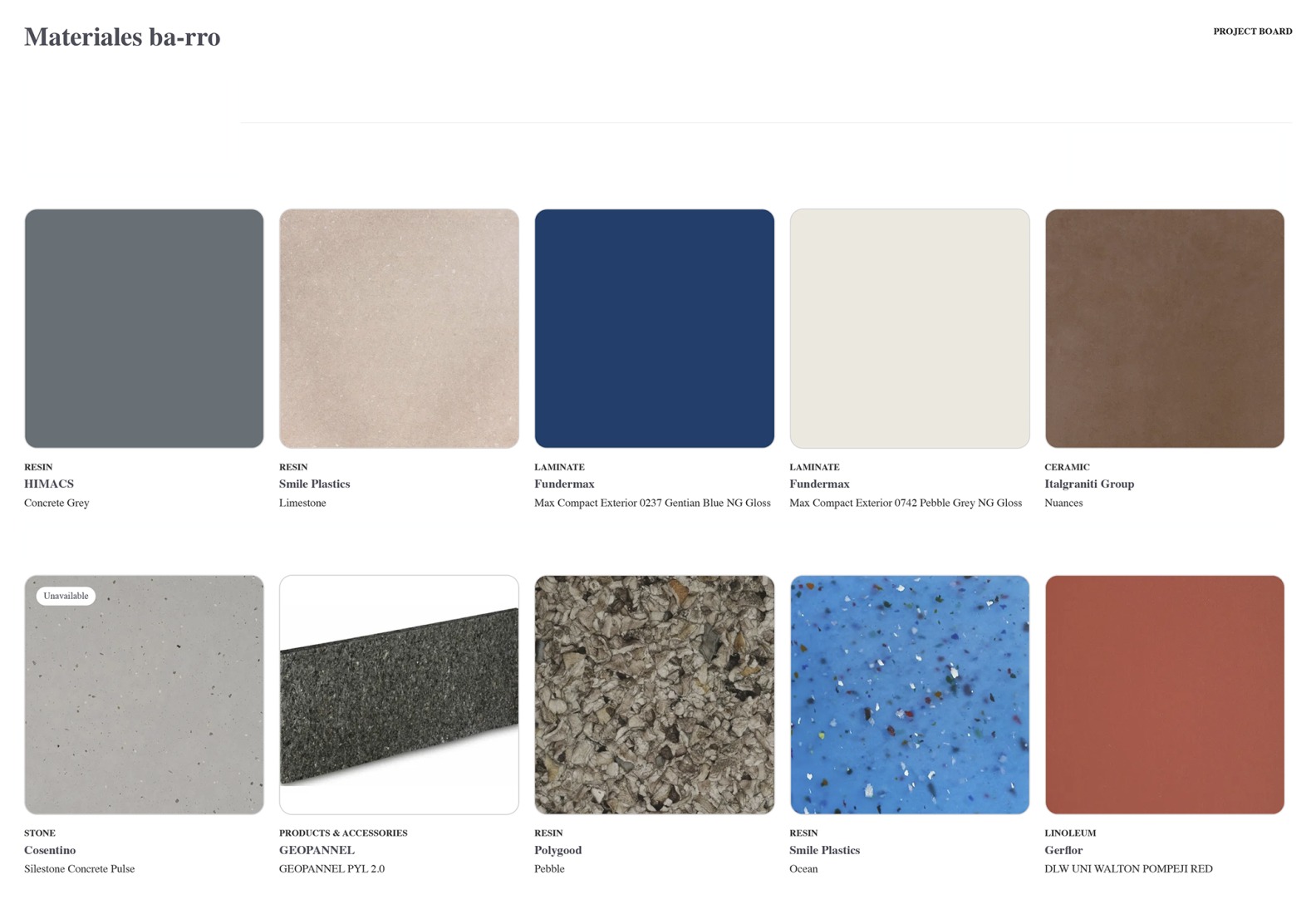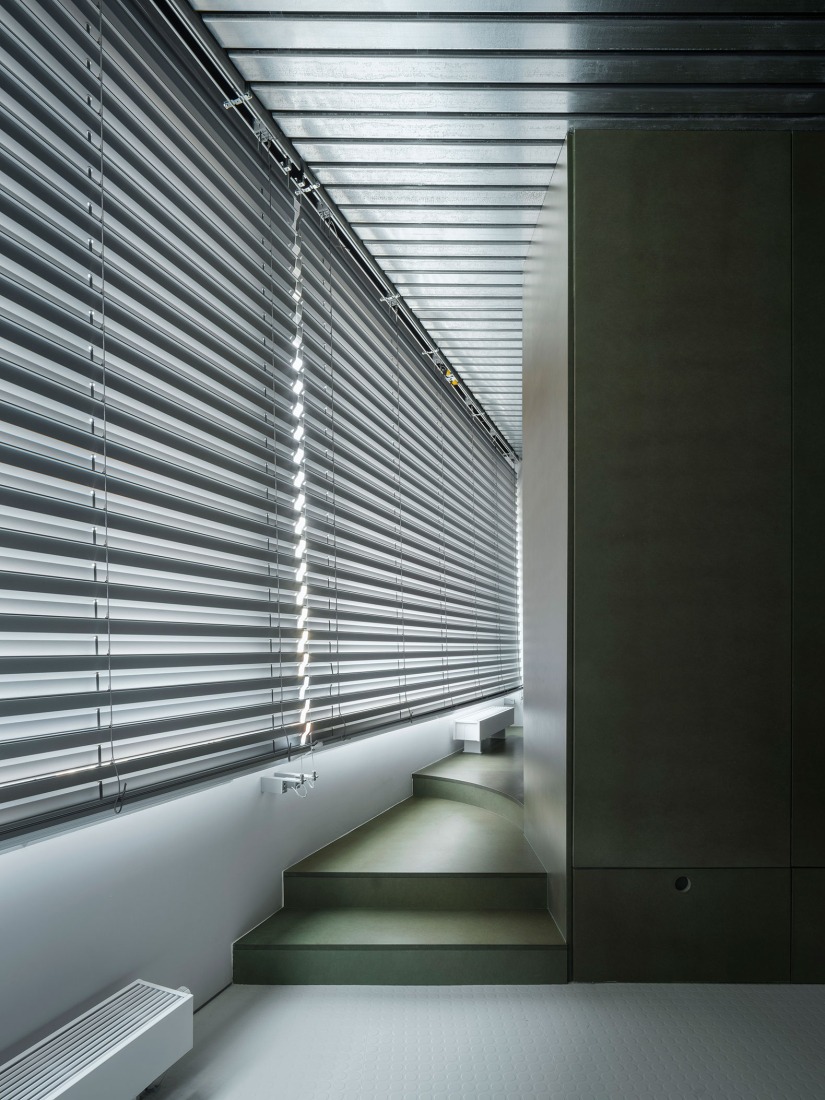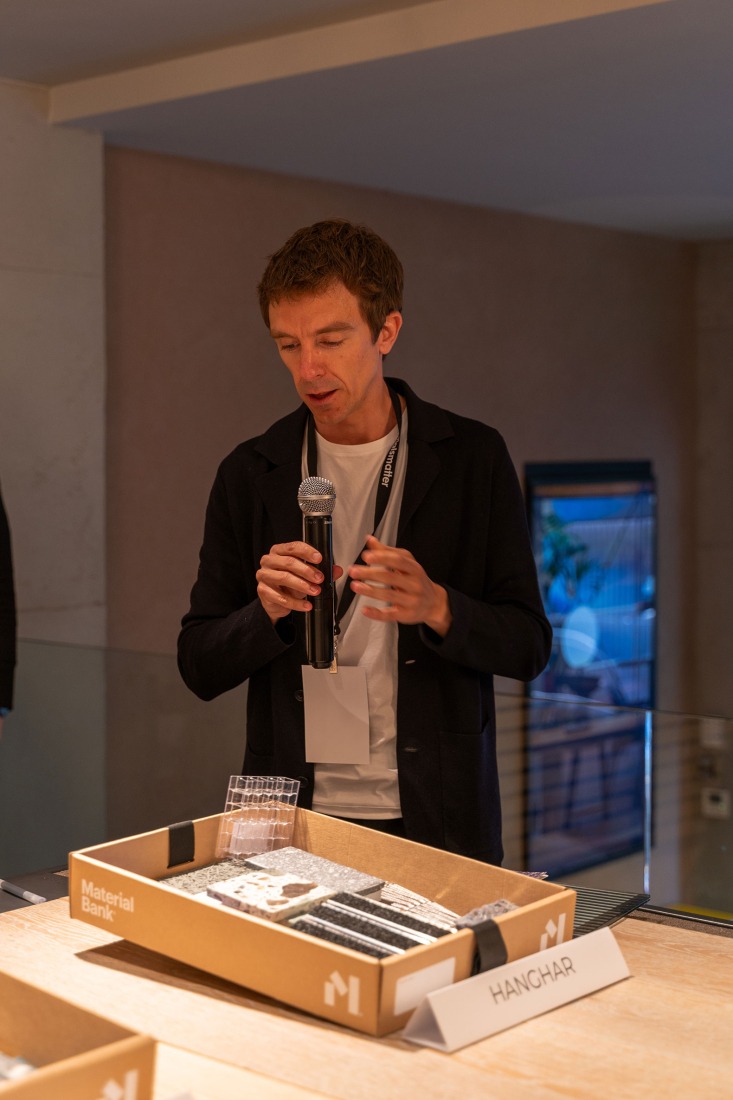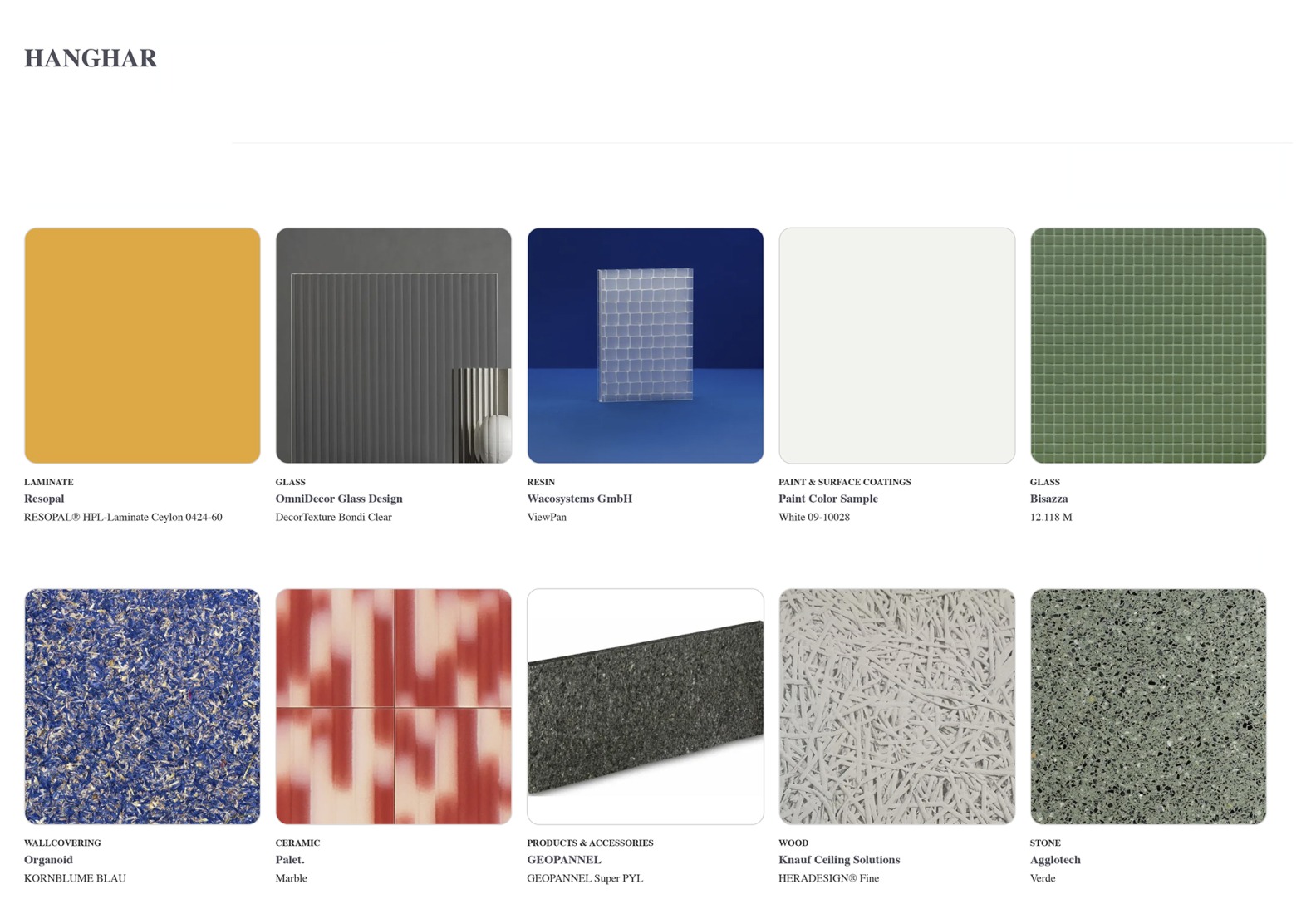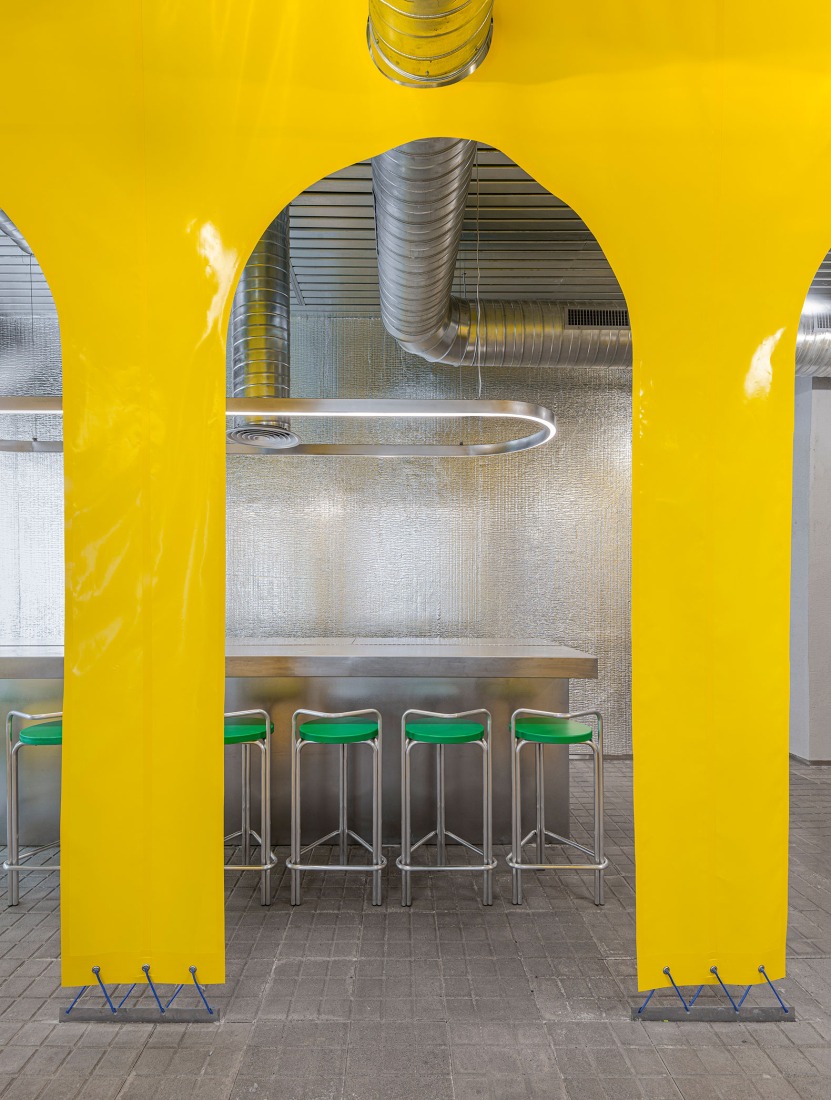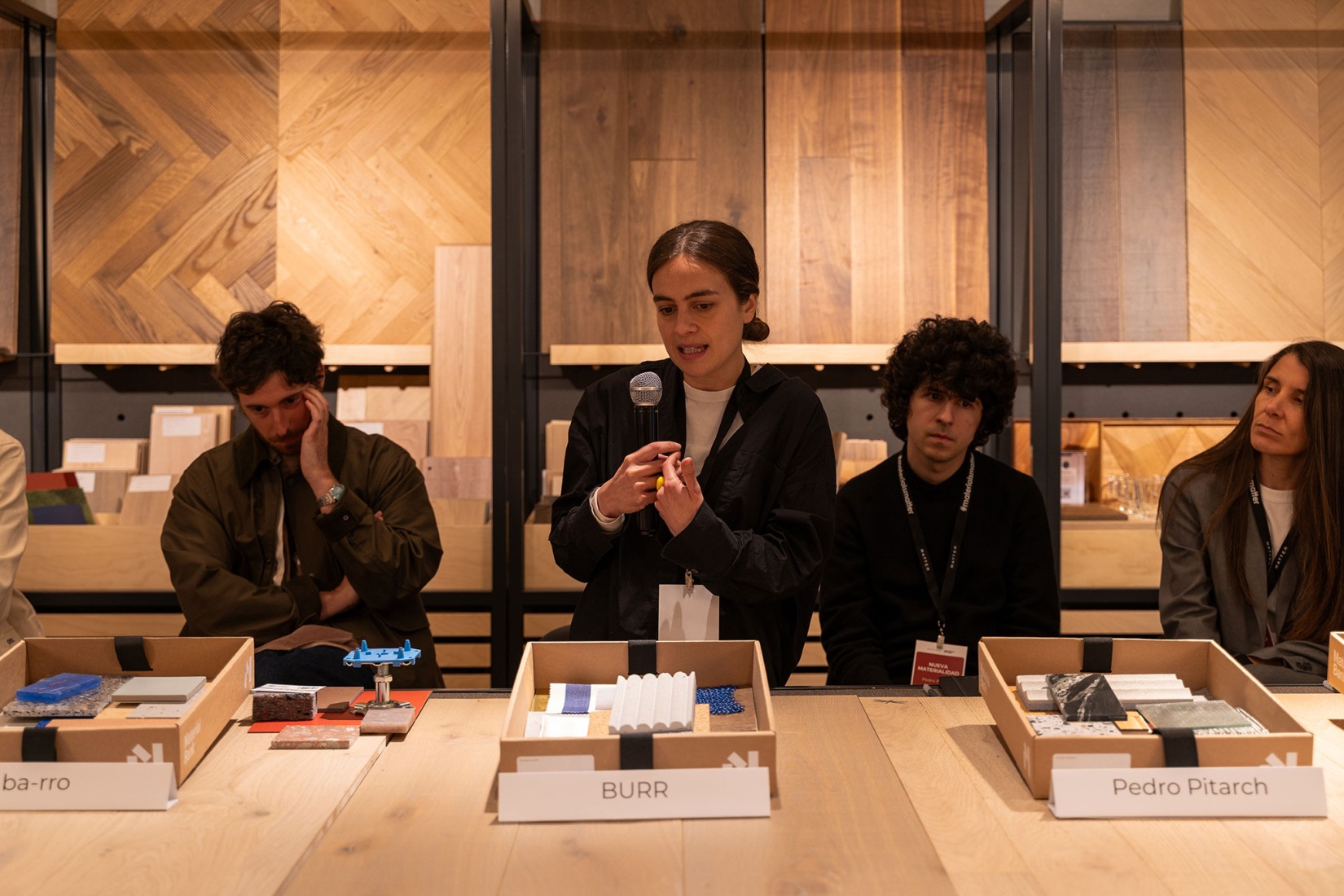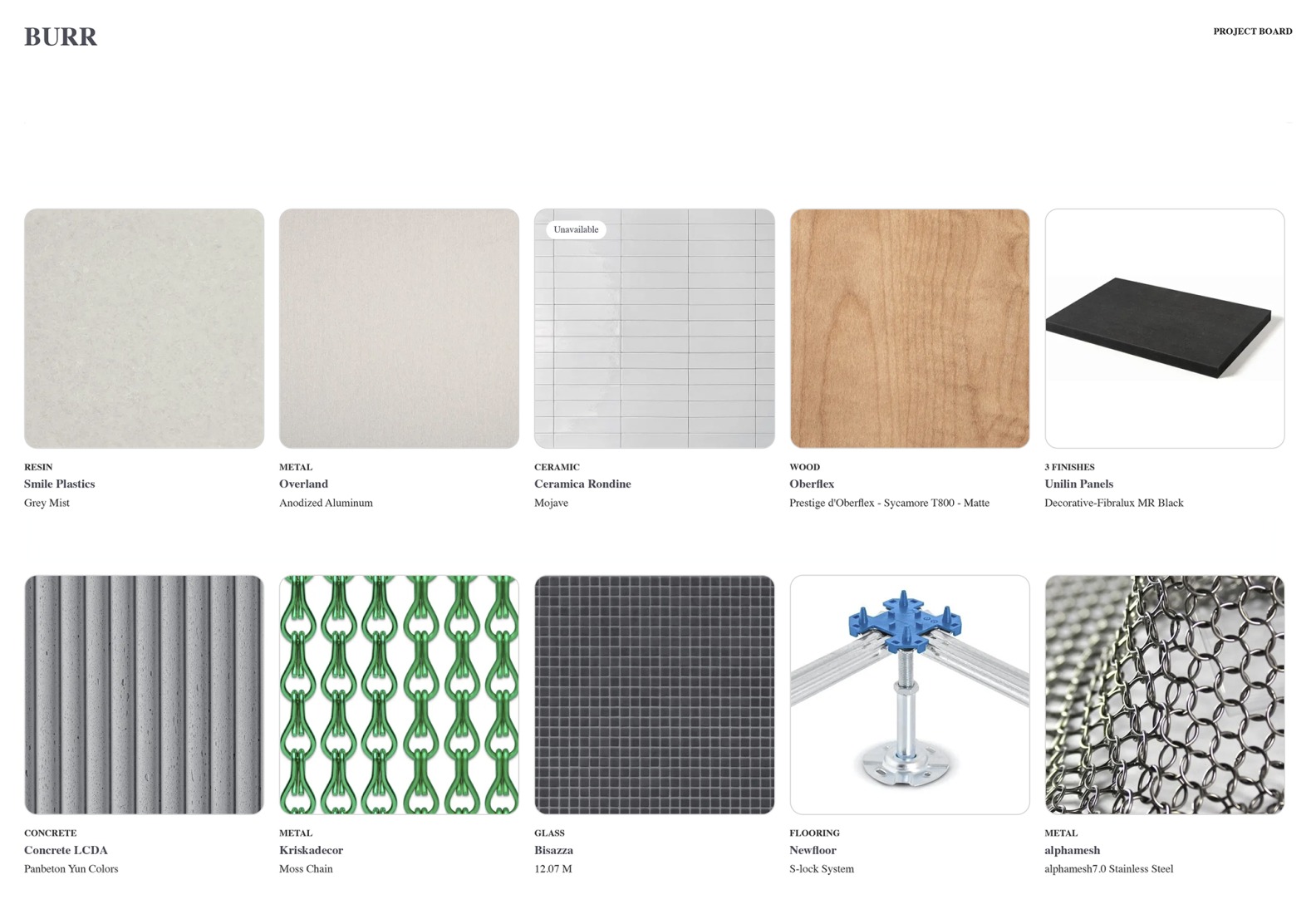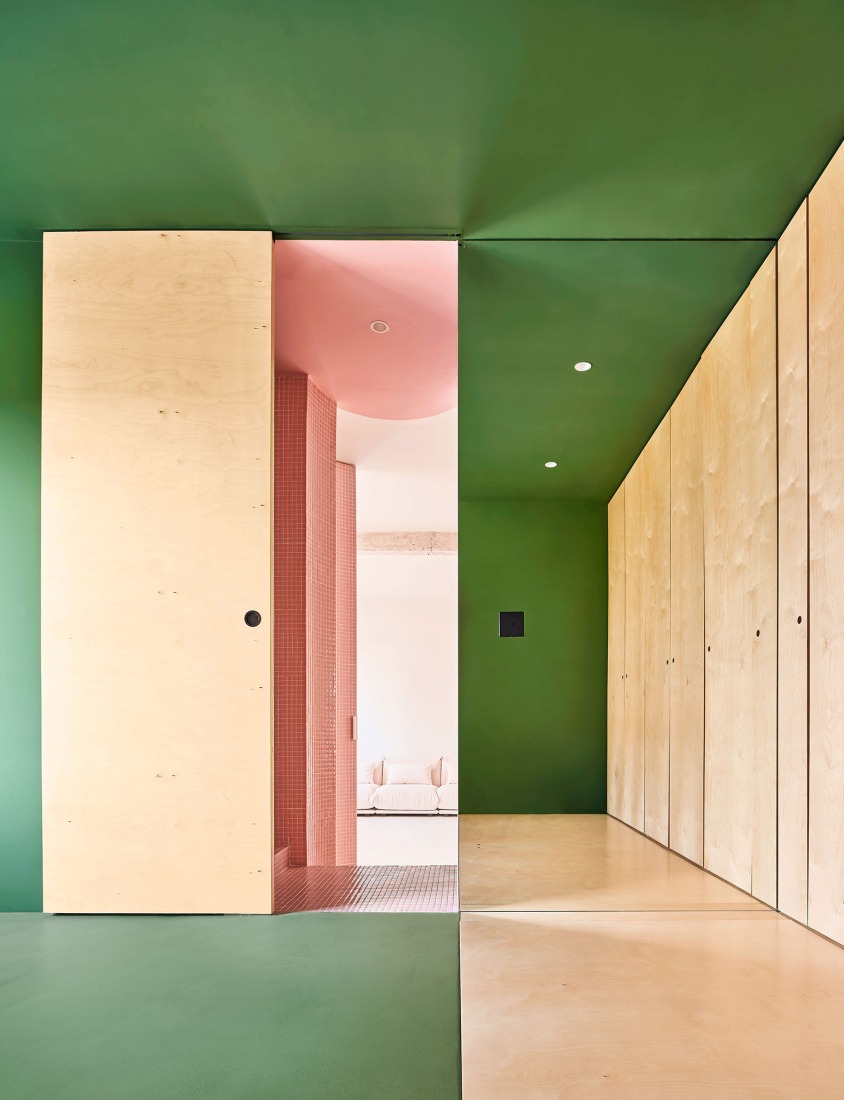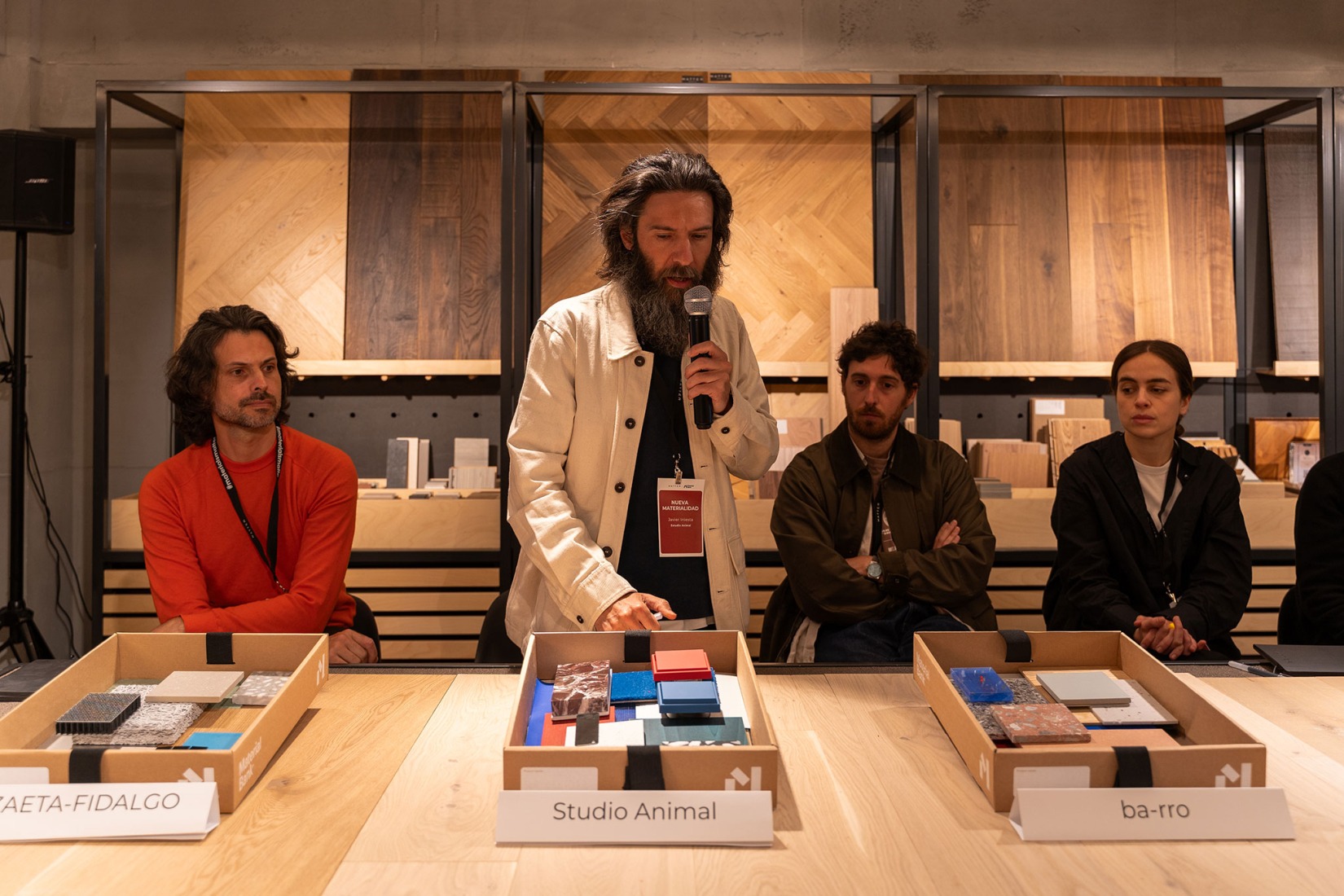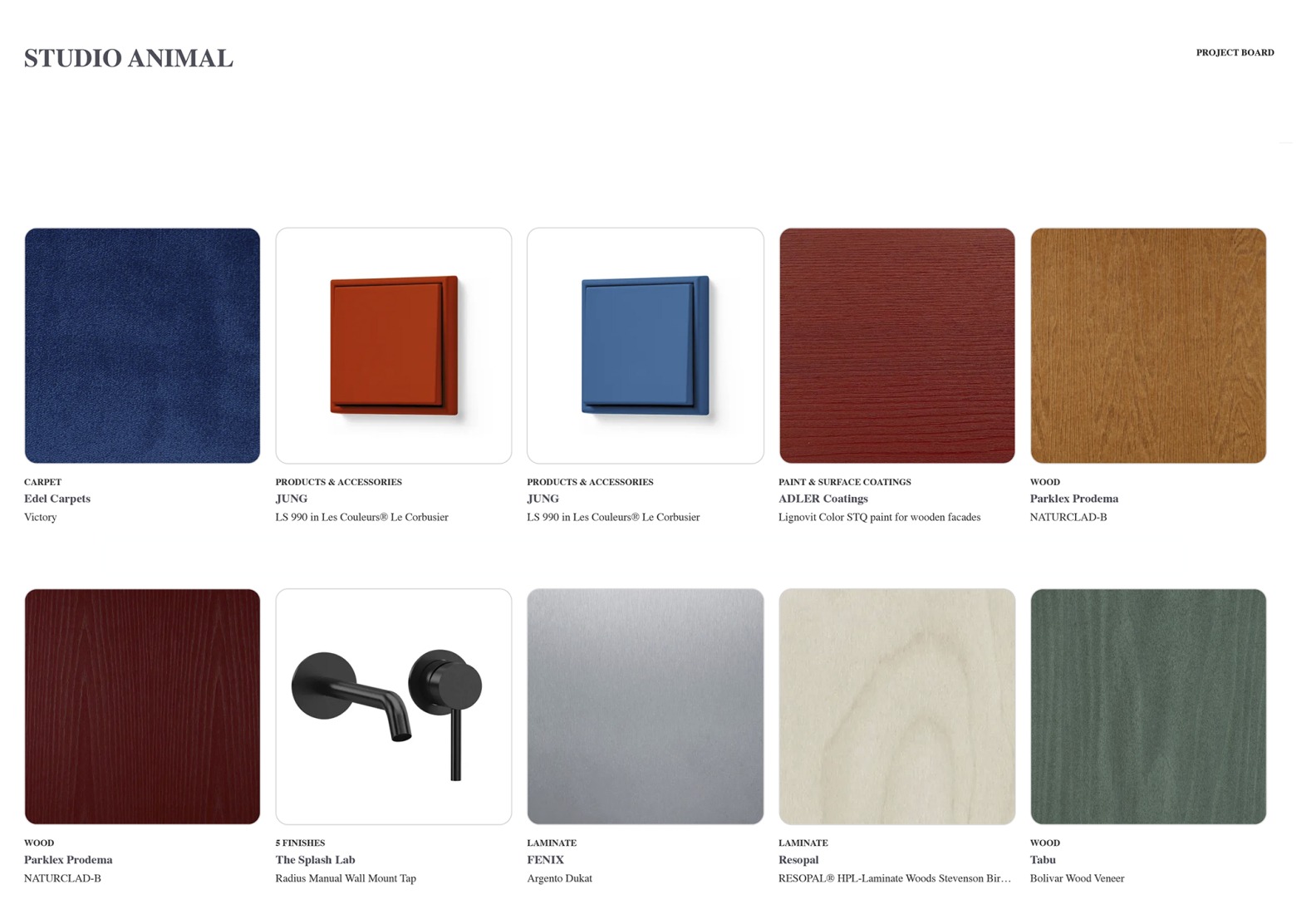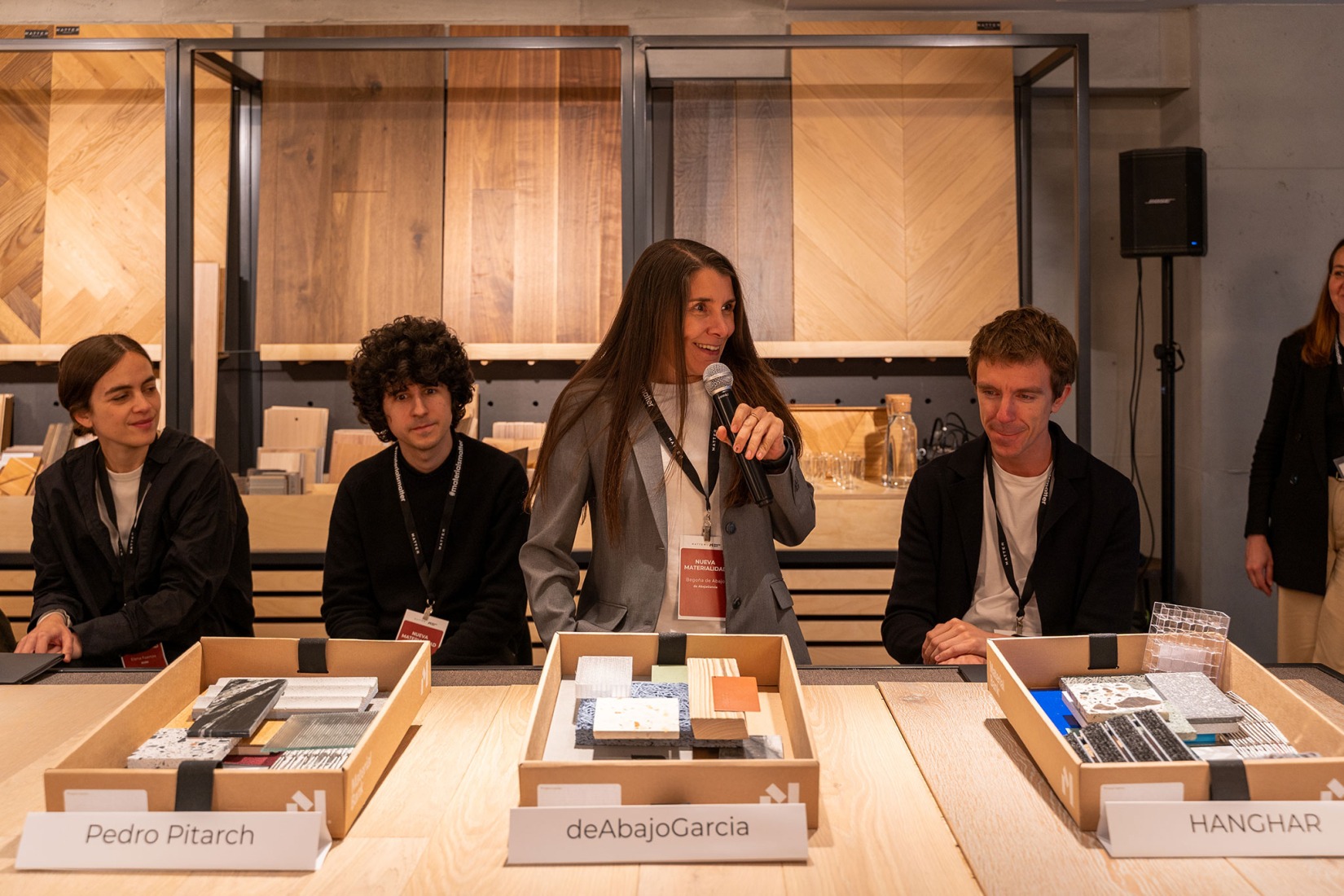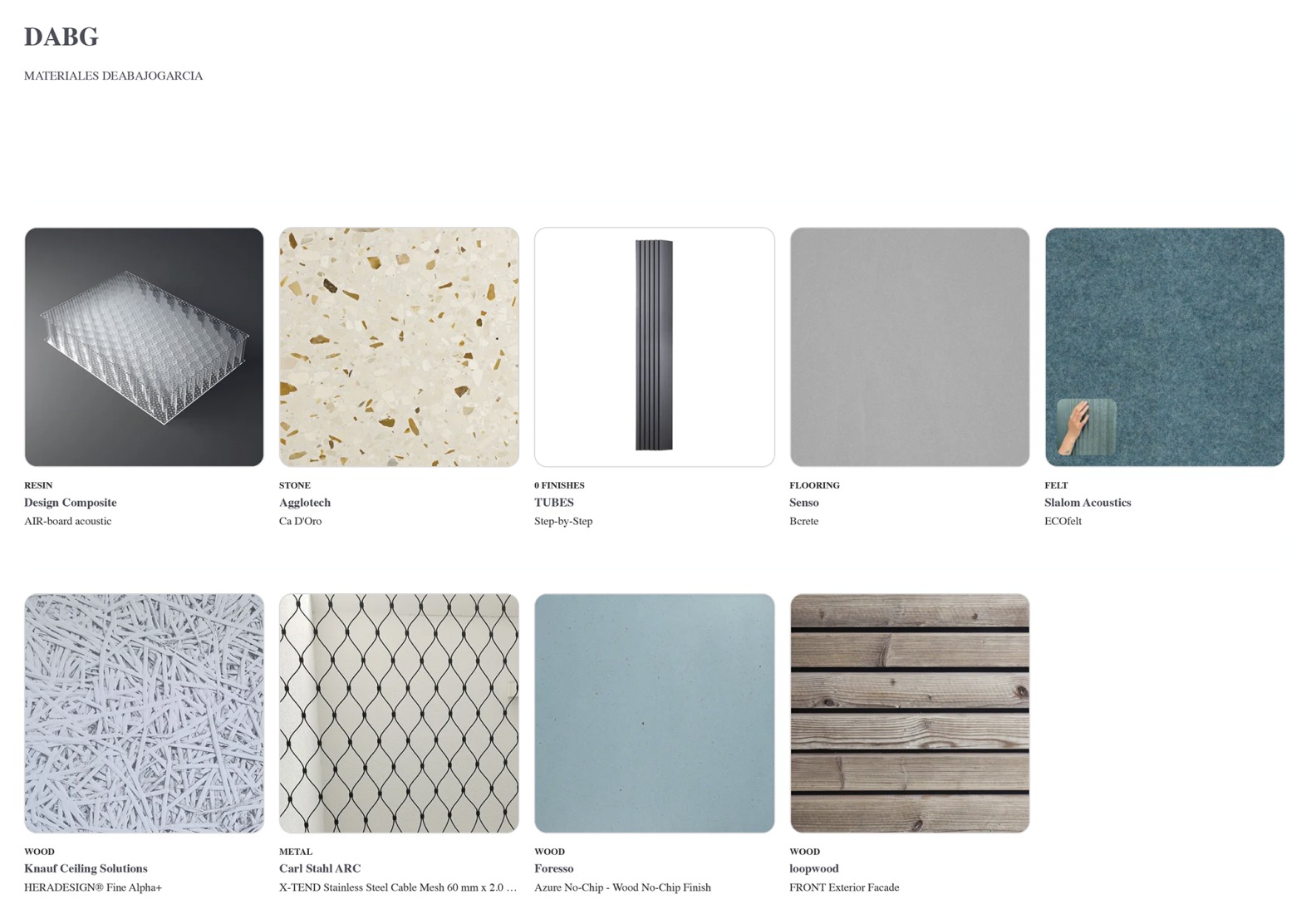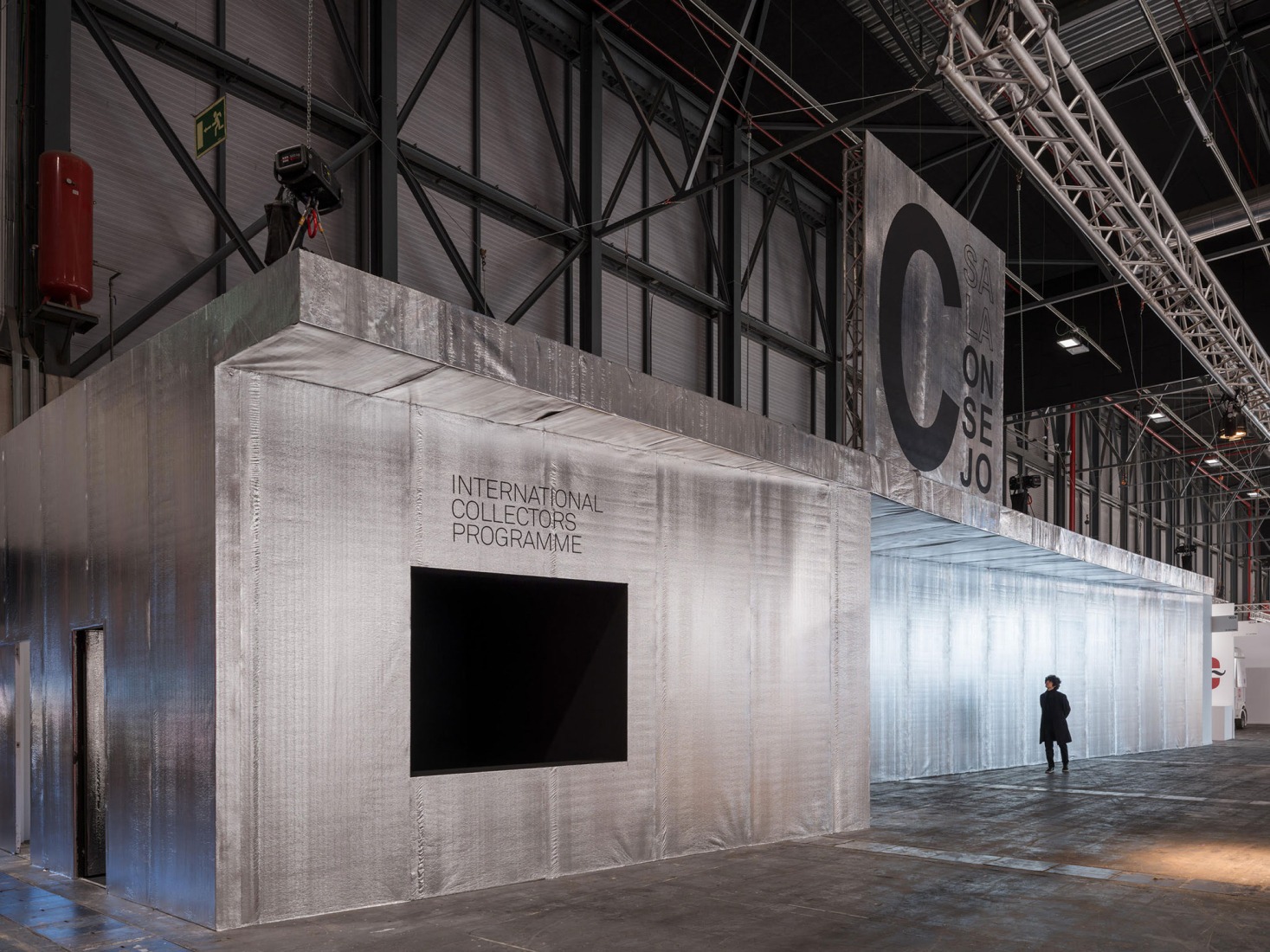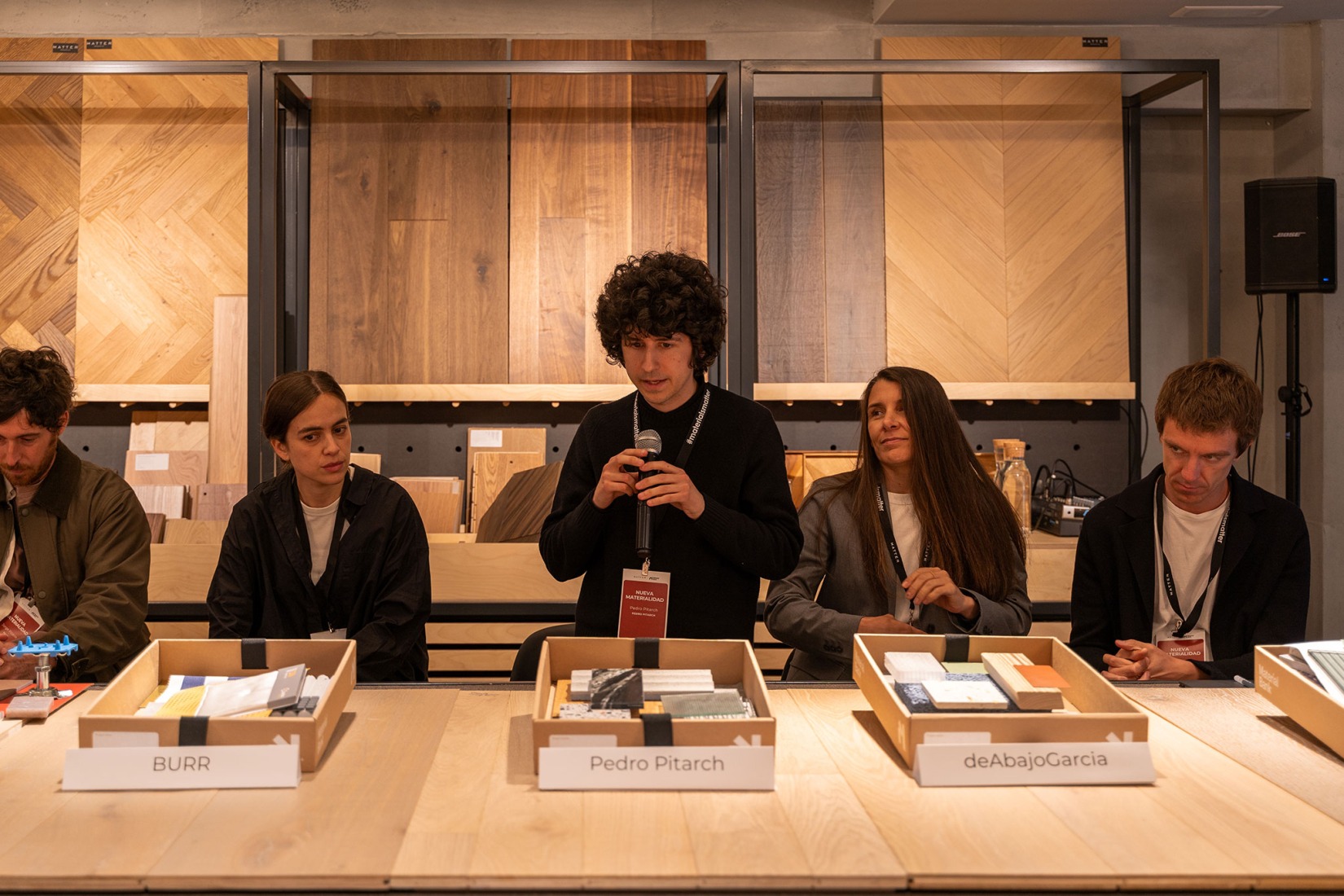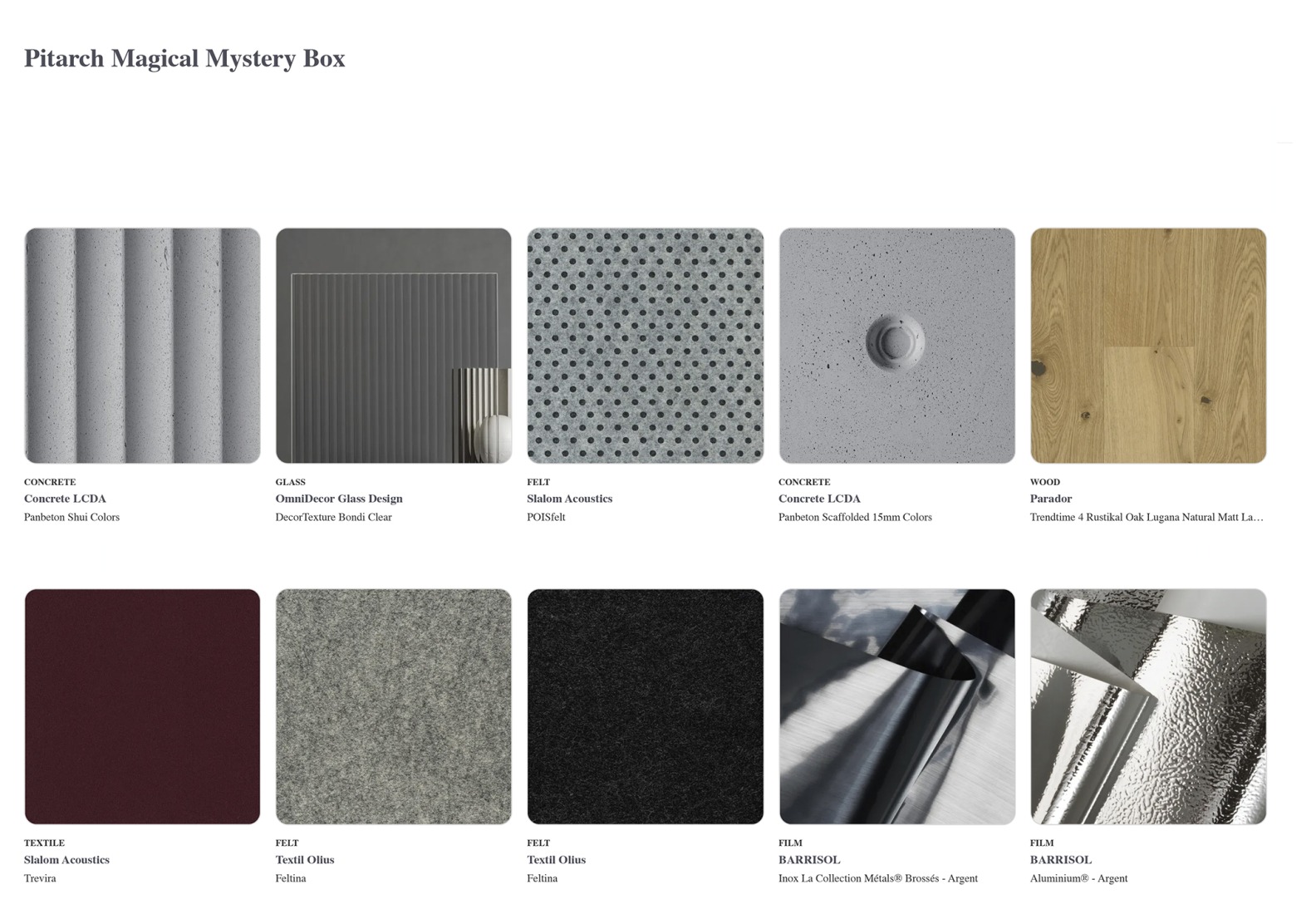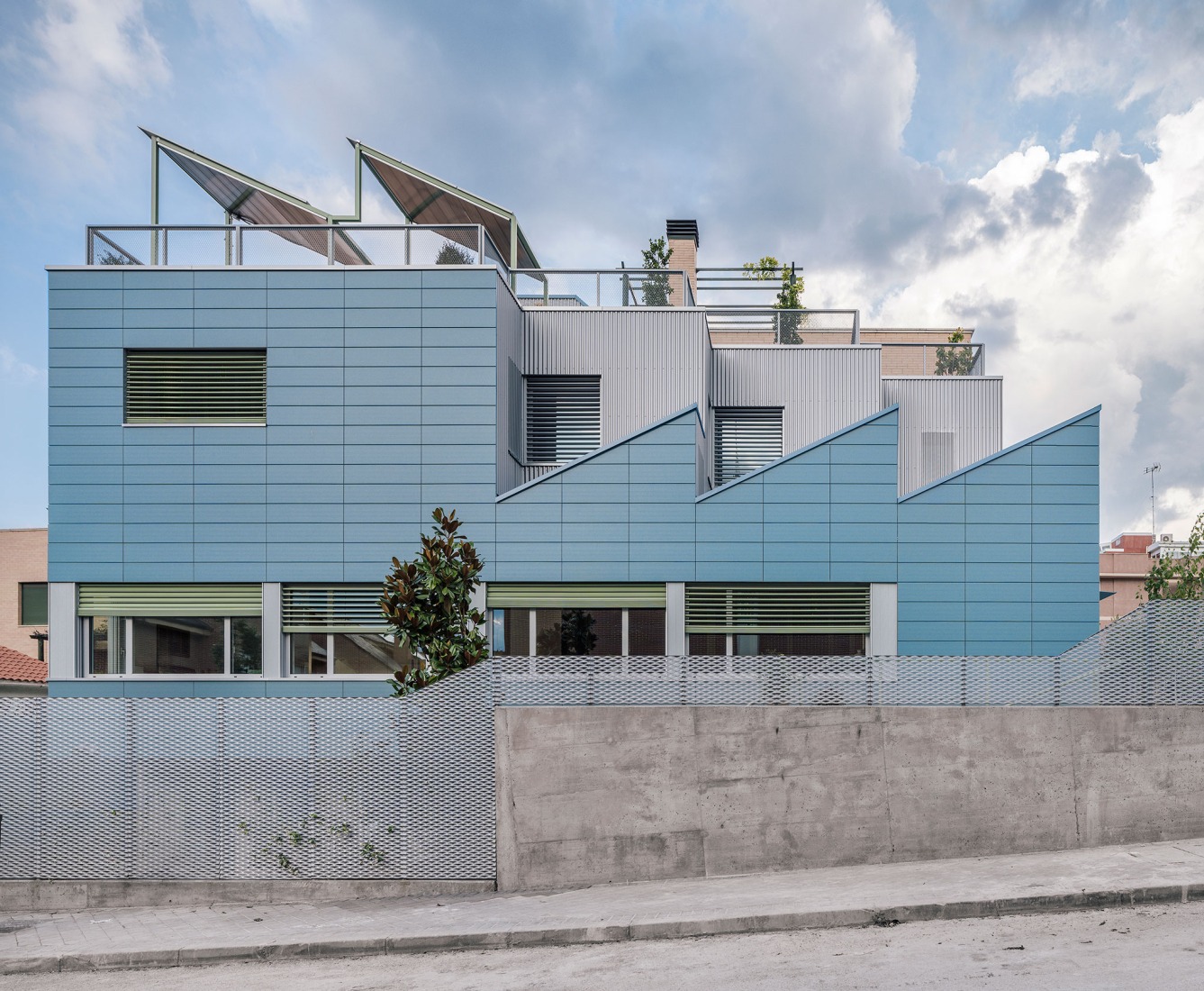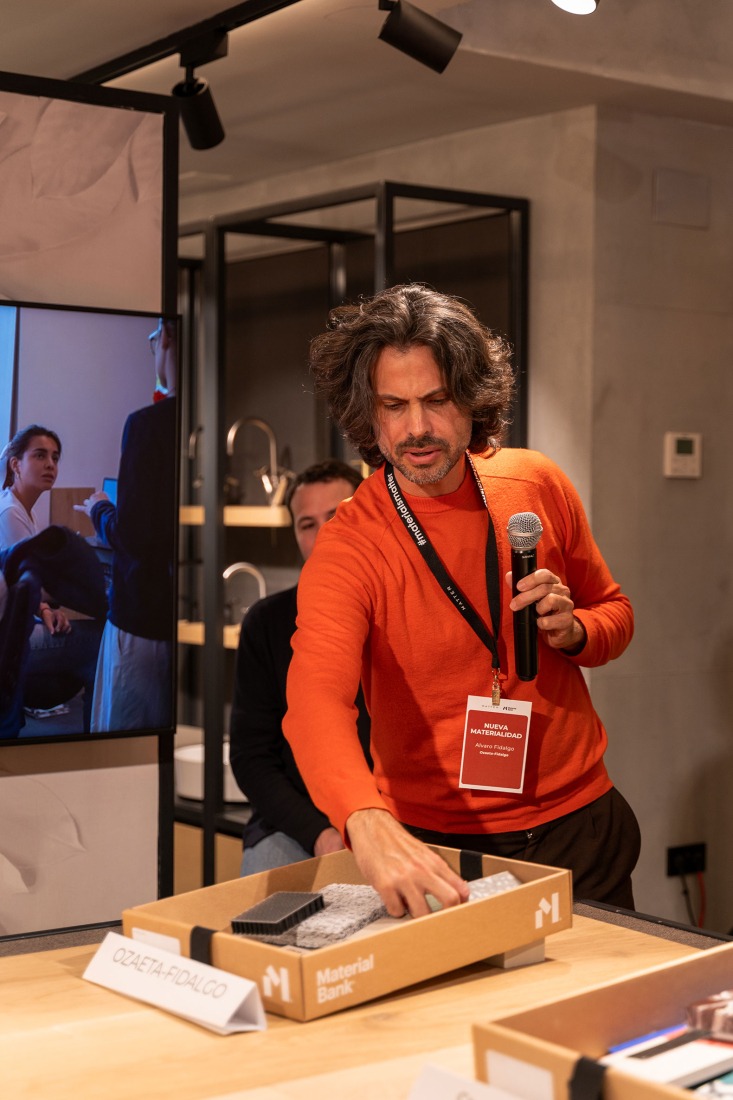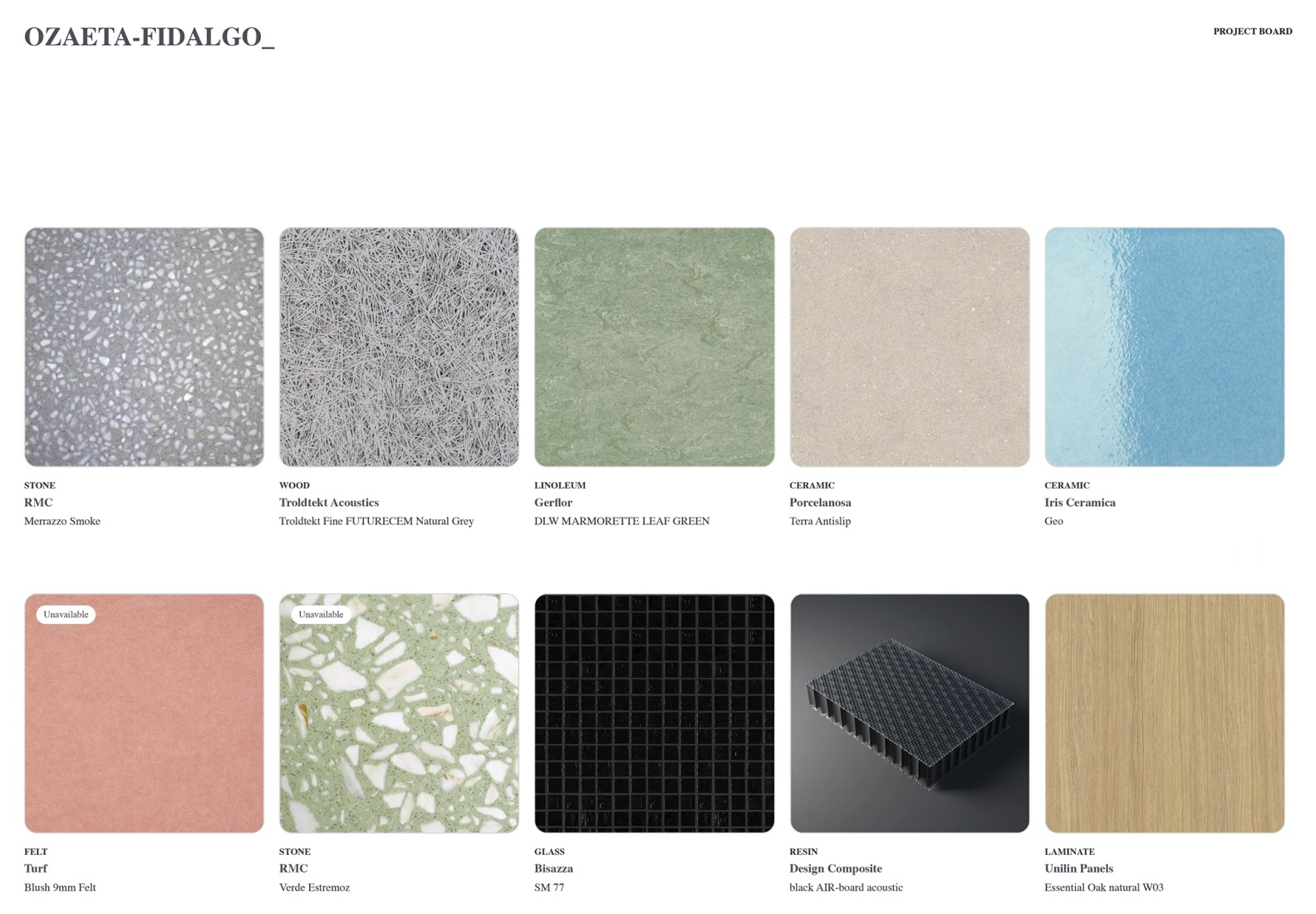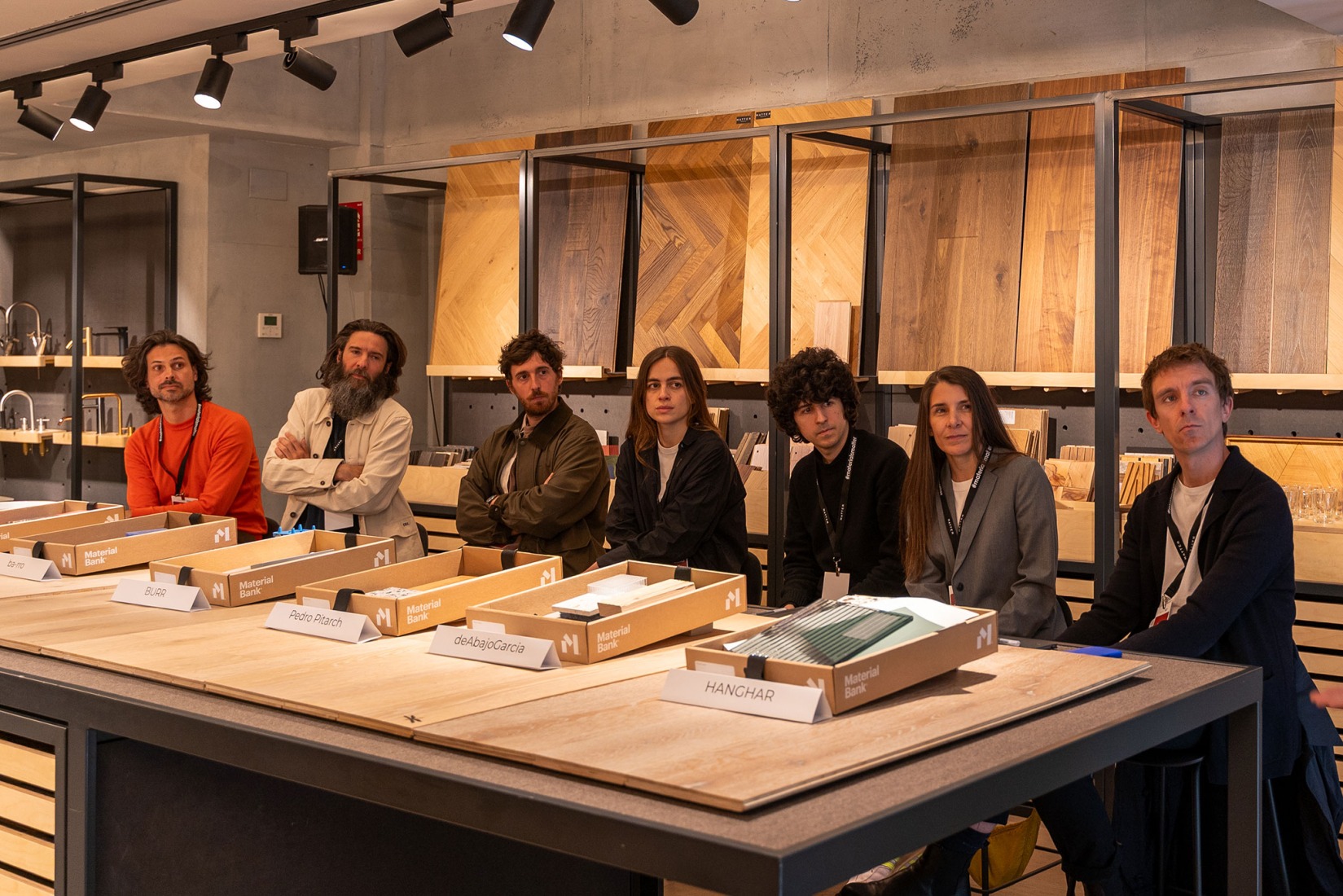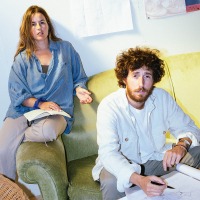The work developed by the architectural studios ba-rro, Hanghar, BURR, Studio Animal, DABG, Pedro Pitarch and Ozaeta-Fidalgo places special care in choosing the materials they use for their construction. In addition to the budgetary constraints often faced, environmental factors are also necessary, requiring a commitment to local, recycled, reusable, and low-carbon materials.
“Any material is the result of a process of resource extraction and environmental impact, in which the profession is complicit. Working with materials that minimize this impact or even reverse it is essential. It is a daily struggle in which we must keep our eyes wide open.”
Hanghar.
During the material selection process, all these studios believe it is essential to adopt a critical approach that transcends aestheticism, promoting architecture that generates meaning, adapts to the context, responds to technical requirements, and is in tune with ethical and sustainable values.
“Materials must respond to contextual, functional, and temporal criteria. We assess how they will behave in the space and how they will integrate into the environment, not only from a technical perspective, but also from a cultural and environmental perspective. Thinking about materials means thinking about processes, systems, and resources.”
BURR.
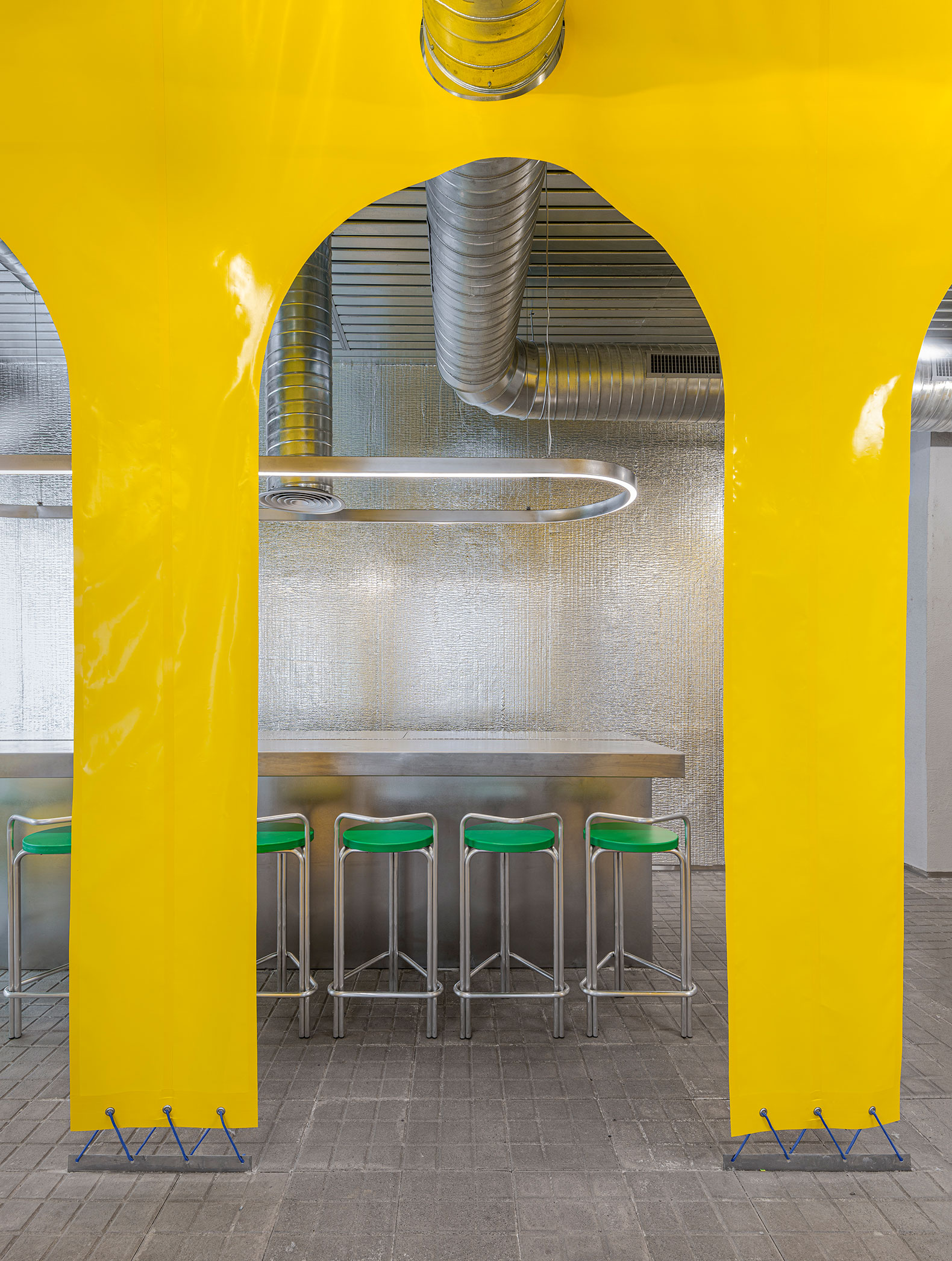
Brutal Burrito by BURR. Photograph by Maru Serrano.
A careful focus on the environment and processes leads various studios to emphasize the sensorial and symbolic dimension of the chosen materials. Materiality is not considered an add-on, but an essential part of the architectural narrative. Consequently, architecture ceases to be an object and becomes a meaningful experience, capable of resonating with the local, the sensorial, and the symbolic.
The New Materiality, in the Architects' Words
ba-rro
Thinking about materials involves understanding what things are made of, how they are built, and what meaning they acquire within the compositional or volumetric intention of the project. The materiality and the project concept advance hand in hand from the initial phases. From the outset, they consider how a space will be constructed and what sensorial and perceptual qualities they wish to evoke. They turn to traditional techniques and materials that combine economic efficiency and aesthetic value, consolidating a critical and creative approach to local resources.
Hanghar
Material is present without imposing itself, like another variable in a larger equation. Matter accompanies, reinforces, and concludes. Their architecture is born from a deeply conceptual approach, where the project is constructed from ideas, relationships, and tensions rather than from elements. The choice of material comes as the final layer, the one that has the power to consolidate or blur the meaning of everything that came before. Each material carries a meaning that goes beyond its appearance or function; its use is, in itself, a position taken.
Burr
In his practice, the choice of materials emerges from a deep reading of the physical, functional, and symbolic context of each project. Materials are not chosen for familiarity or style, but for relevance: what they tell, where they come from, what relationships they activate. Burr seeks to integrate displaced elements, obsolete techniques, or materials from other fields into the architectural language. When incorporated into contemporary projects, they reveal forgotten systems or reactivate technical intelligences that conventional construction has marginalized.
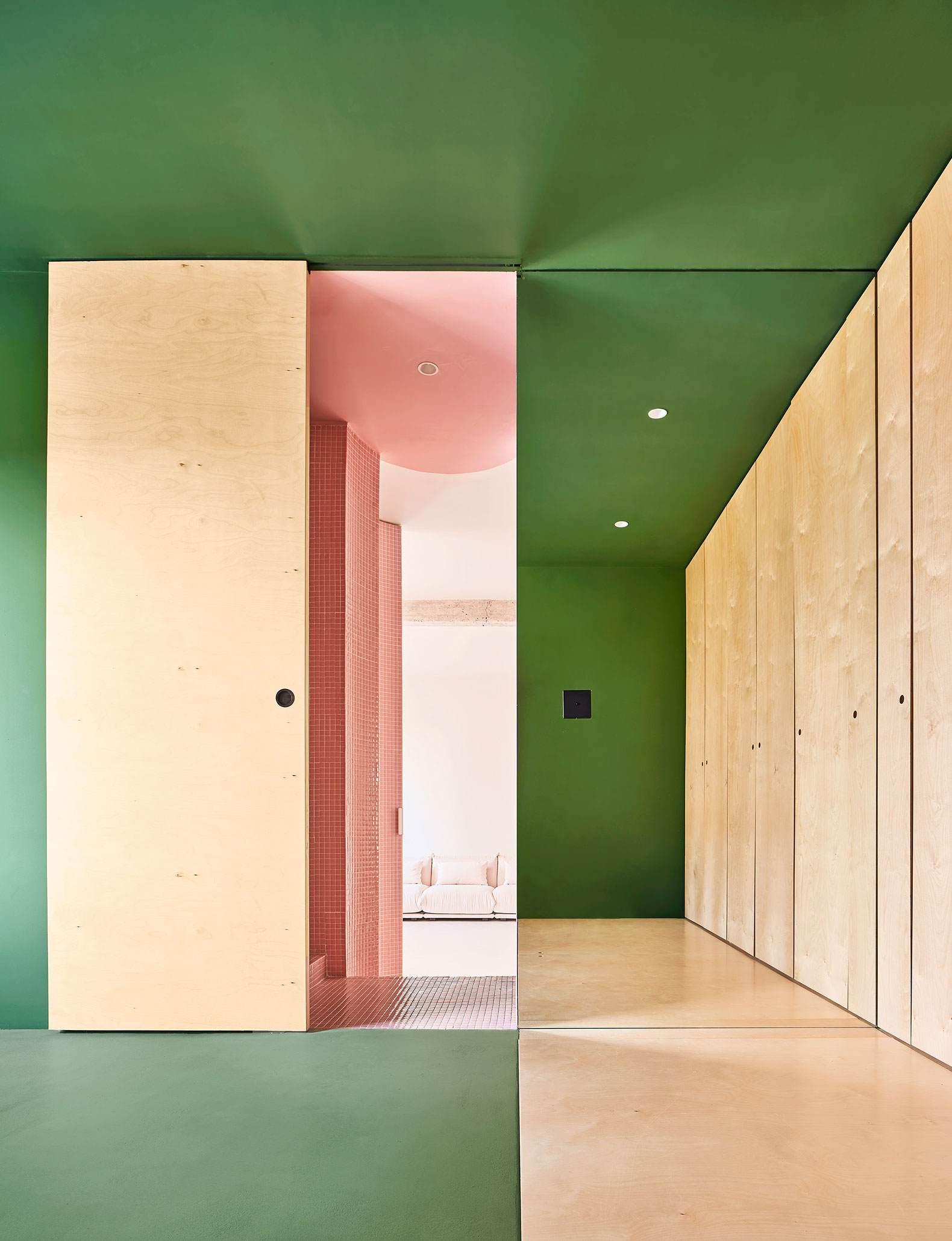
Casa Nube by Studio Animal. Photograph by José Hevia.
Studio Animal
When prescribing materials, they believe the choice must be consistent with the specific needs of each project. In their practice, they value color as a fundamental tool for creating atmospheres. Color is expressed not only through pigments, but also through the materials themselves. They work with sensations, with artistic pieces, inviting the user to imagine the space from an emotional and atmospheric perspective.
DABG / deAbajoGarcia
The choice of materials extends to factors such as availability or the proximity of local industries. They focus on honest materials that can be shown as they are. Constructive logic is present from the beginning of a project. Whenever possible, they tend to leave the building's structures and infrastructure exposed, paying attention to materials that allow their manufacturing and assembly processes to be highlighted during the execution of the project.
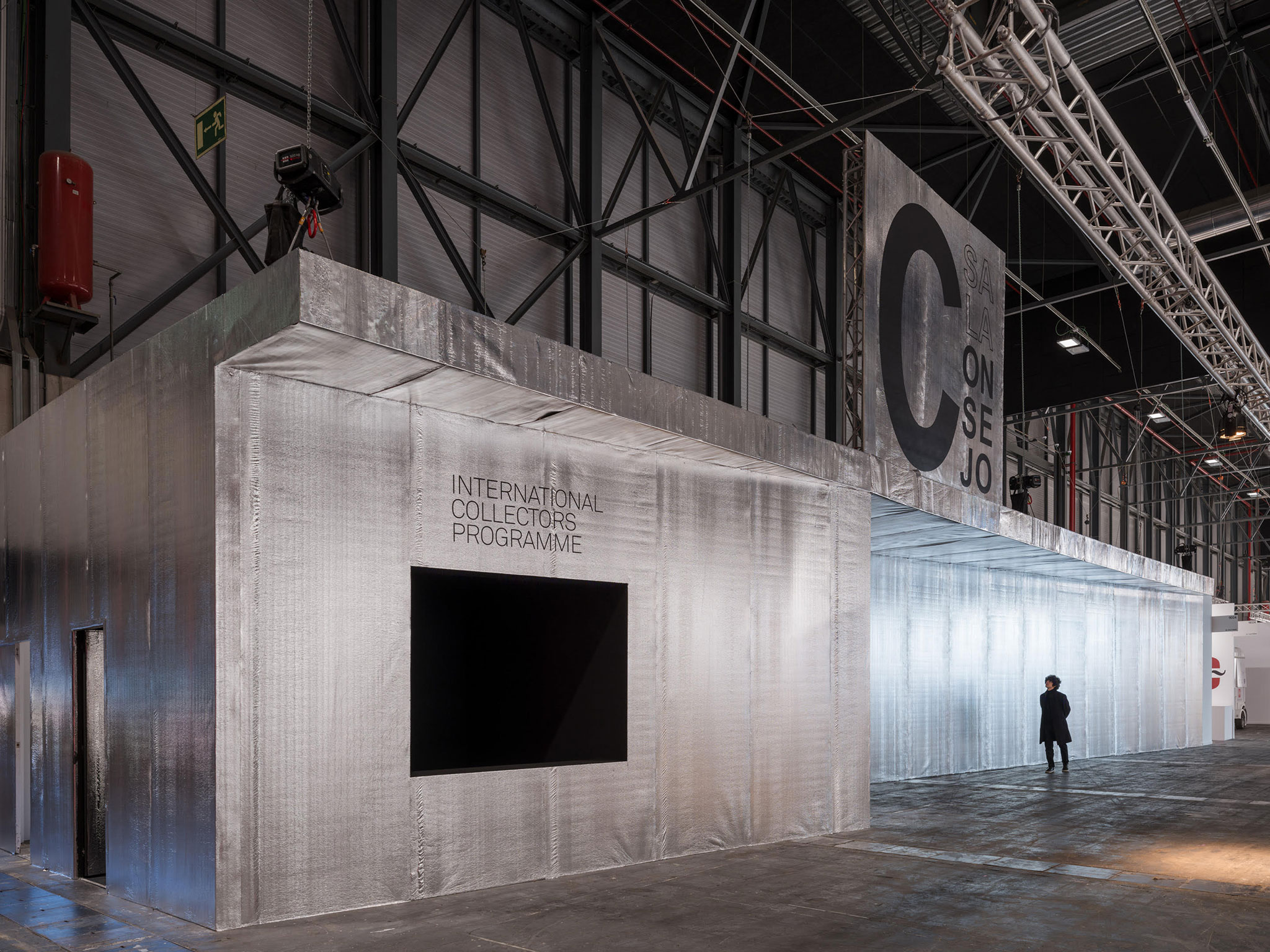
ARCO 43 by Pedro Pitarch. Photograph by Imagen Subliminal.
Pedro Pitarch
In his practice, the selection of materials is defined by their ability to respond to a contextual logic: their availability in stock, their adaptation to the production processes of local trades, or their ability to be reinterpreted. Unlike modern or postmodern architecture, which rely on theoretical structures to impose solutions, his method seeks to structure the contingent, giving order to complex contexts without artificially problematizing them or intervening with closed-loop responses. He works with the context as if it were just another material in the project.
Ozaeta-Fidalgo
They conceive of materials as part of architectural thinking from the outset. Each new project is an opportunity to incorporate something unknown, to test a new materiality, or to explore an unexpected application. They are interested in innovation, yes, but not blindly. When prescribing materials, they gather information directly from manufacturers, installers, or even visit constructed projects to assess a material's actual durability.

